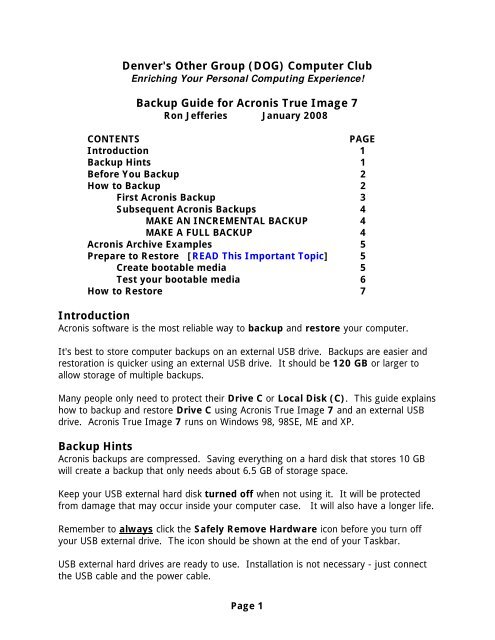

Later in the afternoon my hard disk had recovered somewhat, but I still wanted to move on to the new drive because computer problems that go away on their own have this nasty habit of coming back on their own… I found the product was available with a 15 day free trial and the reviews looked good. At just under $50 it was $20 cheaper than Noprton Ghost, the equivalent product from Symantec, which acquired PowerQuest’s product line. I talked to a friend and he mentioned Acronis True Image. Probably the activiation mechanism realized I had previously activated the software on another machine, a desktop which I had used to try to copy the notebook drive to another internal drive because there I can hook up multiple drives to ATA cables. As soon as I started DI7 the program terminated, no error message. That’s how the upgrade from the original 12 GB drive had been done.

Next I installed PowerQuest Disk Image 7 (DI7), which allows you to copy an entire drive to an image file on another drive and later restore it to another disk. To be on the safe site, I first copied a few essential folders from the internal drive to the USB drive. a 60 GB USB notebook drive (Logitec) – I was originally looking for an internal drive (2.5″), but the USB version proved very useful.Eventually I didn’t need this for the upgrade, but my 160 GB USB drive had too little space left for making a 40 GB image and I would have had to get something bigger soon. a 300 GB USB drive (IO DATA / Maxtor).I went out to local computer stores and ended up buying two items: With the disk errors announcing the eventual failure of the drive it looked like I didn’t have much of choice. The Windows registry and all the application settings in there don’t travel that easily. I keep copies of the same data on multiple drives, but still, you always need a C: drive. That way, if one machine goes down I just plug the drive into a USB port on another box and life goes on. Most of my data these days sits on external USB 2.0 hard disks. Though I was worried about how long it would last, I was not keen on having to reinstall all the software on it if I were to move to a new machine. It’s been quick enough and it was a reliable performer. I don’t see the point in purchasing more CPU power than I need, just as long as the rest of the system is adequate. A disk upgrade from 12 GB to 40 GB about 4 years ago and a more recent memory upgrade to 512 MB have kept the 650 MHz Pentium III machine quite viable for me. Not a good way to start a relaxing weekend, I thought. This is usually a sign that a drive is on it’s way out. It performed lengthy retries and eventually produced write errors from Windows.

Last Saturday the hard disk in my notebook computer started making strange noises.


 0 kommentar(er)
0 kommentar(er)
